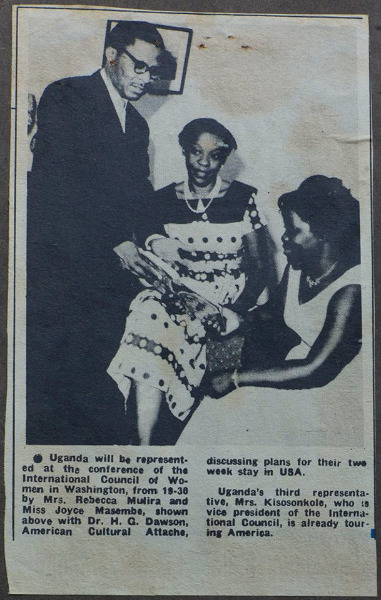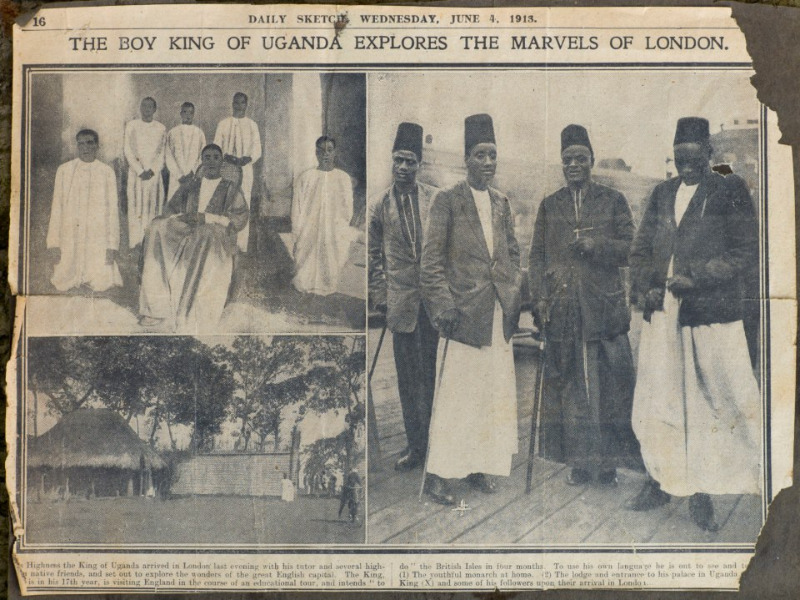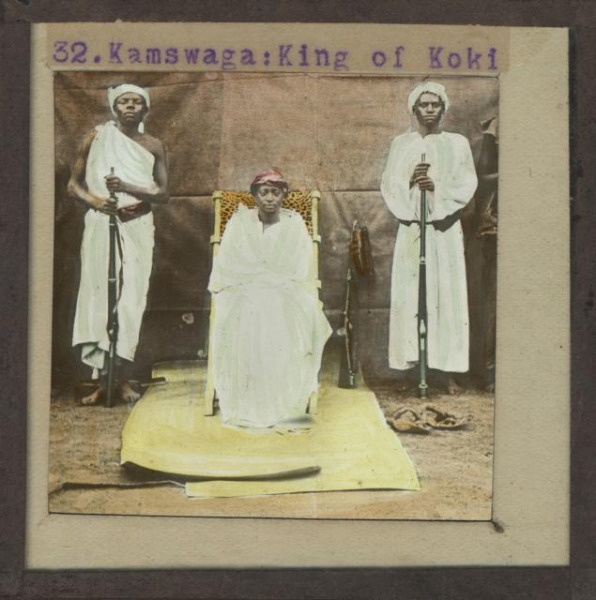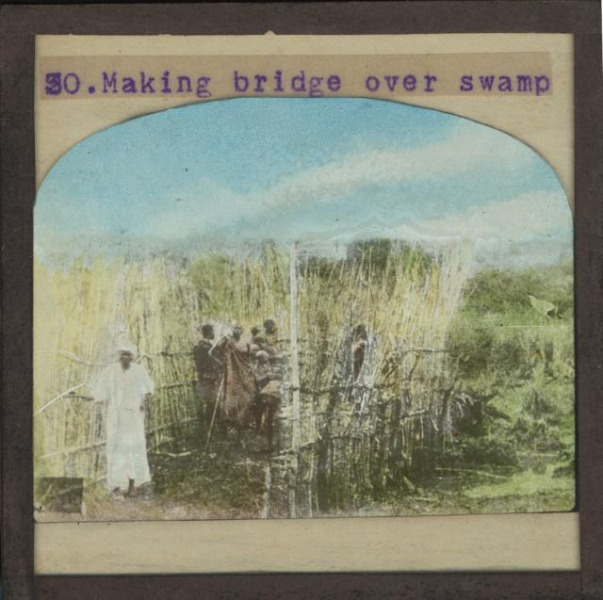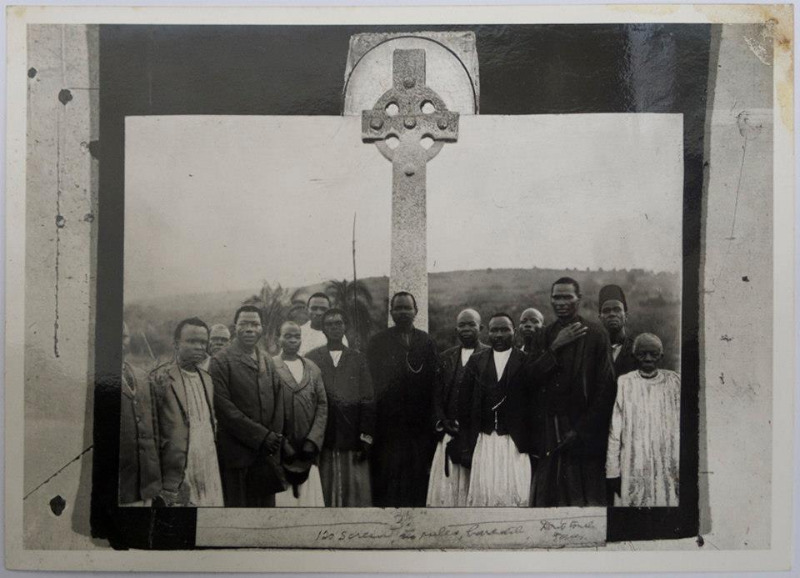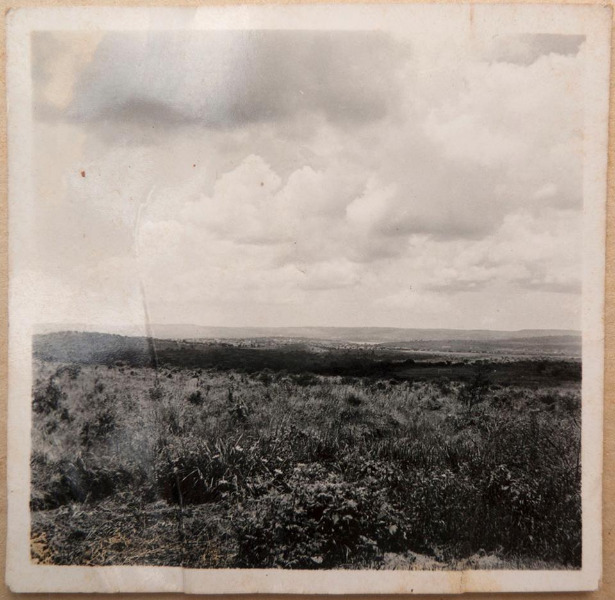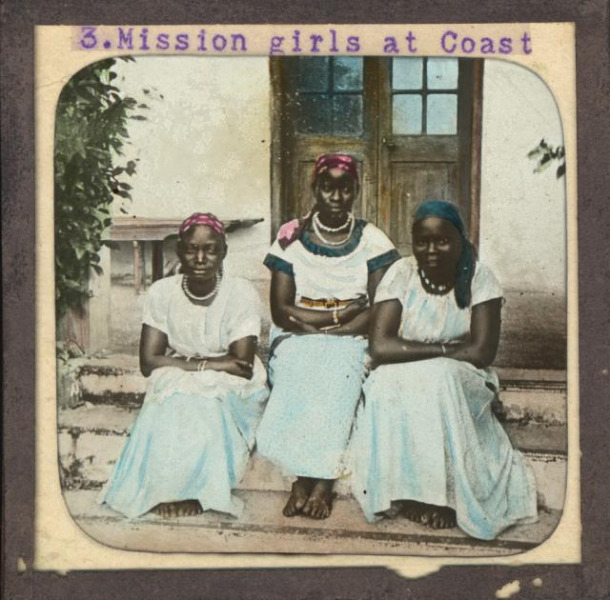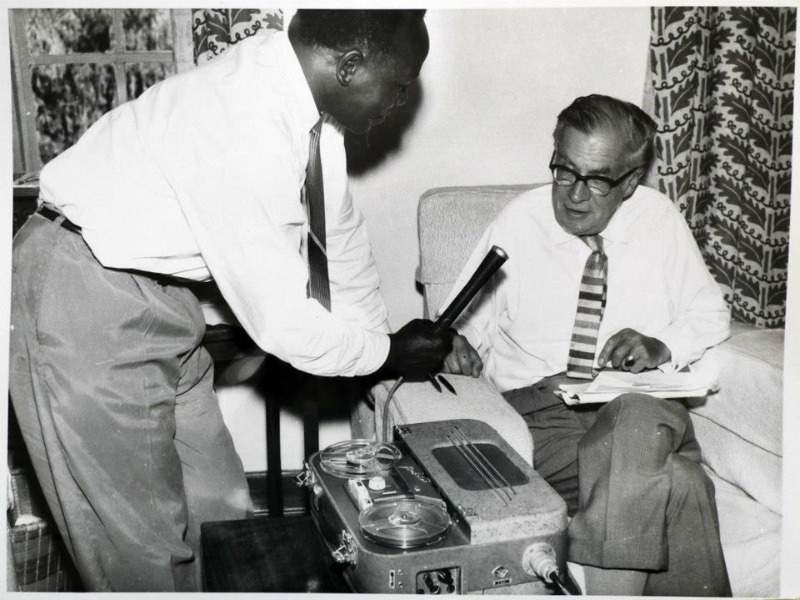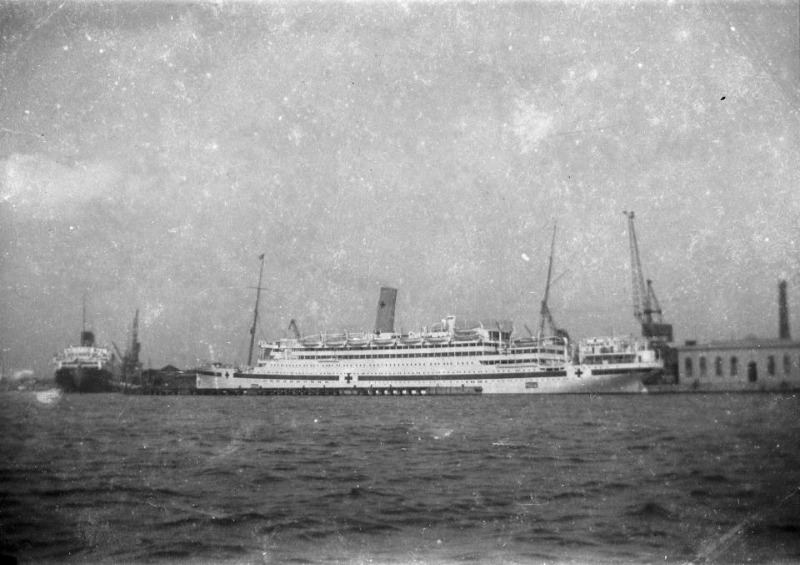« History in Progress Uganda » (HIP), a platform founded and energetically run by Dutch photographer / artist Andrea Stultiens,aims toidentify, preserve and publicly document the social biographies of historical photographs kept in, or related to Uganda. The idea behind it is to open up new paths to examine the history of Uganda, rethinking history in the light of photographs and the way they can be contextualized.
This rich experience, which could inspire others on the continent where the problem of (photographic) archives is at present crucial, also distinguishes itself for the dedication and attention it offers to « modest » photographs and ensembles: what matters then is how, why, in which contexts and for who particular images have been produced and diffused (or not), rather than « exceptional », formally astonishing images.
Andrea, can you please recall the different phases that led you to design and launch the « History in Progress Uganda » project?
In 2001 and 2006, I visited a friend with whom I used to live in a student house. One of the first things she told me – at least in my memory – was that she wanted to go to Africa. I had no particular interest in the continent then. As a photographer, I felt that I needed to understand what I photographed, but I did want to see her where she wanted to be. During both visits I paid her in Uganda, I had a huge cultural shock. I had to think about every step I took. After the second visit, I thought that maybe I could use my skills and knowledge as a photographer there. Not to say something about Africa (or, more specifically, Uganda) but to try to understand my culture shock, the way I, with my Dutch background, related to what I experienced.
When I was in Uganda in 2008 to prepare an exhibition of the results of a first photography exchange project, where I collaborated with school children in the Netherlands and Uganda, I was introduced to Kaddu Wasswa. When I told his grandson, Ugandan photographer/artist Arthur Conrad Kisitu, that I was a bit frustrated with what I could easily access of Uganda’s historiography and was therefore interested in local archives and the images in them. He suggested that I should meet his grandfather. Kaddu Wasswa turned out to have documented his life very extensively. A week after we met, I started an MA program in photographic studies at Leiden University. I graduated a couple of years later with a visual thesis called The Kaddu Wasswa Archive, a Visual Biography (1). When visiting Uganda to work on the Kaddu Wasswa archive, I saw several other archives and started to digitize them by photographing the images in them. I was aware that those digital files might prevent the material from getting lost, but that they would be of no use just sitting on my hard drive. That would still be the hard drive of someone who was an outsider to what the photos were showing, the culture and past they are part of and testimony to. I decided then that I would have to share them. Partly, just to give a wider audience the opportunity to engage with them and the history attached to them, partly because most of the material lacked captions and information, and I hoped to be able to add to that from people sharing what they know. When talking about all this with a Ugandan friend, we decided to just start sharing photographs on Facebook and see where that would lead us. After that we set up a website (that is still not functional the way I imagine it to be). A year later we had our first exhibitions.
Where do these photographs come from precisely? On the HIP Facebook page, we see a huge variety of images in terms of subjects, genres, periods and origins. Some seem to stand as private images, while others are related to official spheres.
On the HIP page, you find institutional collections, family collections and personal collections. Some we actively approached. Others more or less came to us. People following the Facebook page made introductions, friends told us about collections they knew of.
Musa Katuramu’s archive is the latest addition to the collection, and not yet been made public in any way. I encountered it via a friend who happened to be seated next to his son on a bus ride from Kampala to Mbarara. They were talking, the photographer father came up, and this friend told him about History In Progress Uganda. He gave me the son’s contact, I called him, the rest is history, and part of my scanning work
Musa Katuramu lived from 1917 till 1986. He came from Toro, studied carpentry at Makerere Technical College and became a teacher at Mbarara High School. But, in addition to his teaching job, he was a house constructor, had a private carpentry shop and owned a camera (his son remembers it as a Kodak Brownie). He was something like the local town photographer in Mbarara, and also photographed weddings and events in his home area around Fort Portal. I estimate that there are about 1500 negatives, almost all of which 6×9 inches and taken over a few decades from the 1940s onwards.
Having seen many archives that are rather messy and in very poor conditions, I am really excited about this collection and the state it is in. Katuramu’s archive was kept in two dry and dark drawers in his son’s living room. With every negative I scan, I’m falling more in love with this collection!
What objectives do you assign to the project? Since the project started, have its perspectives shifted?
They have grown rather. It is not a fixed thing. I do what I can and will see how it develops while others jump on board. It is a research tool and in the context of a globalized world, that is nevertheless still trying to deal with what colonialism left it with, it seems important to me that any European researcher dealing with and trying to understand something about Africa does this in complete openness. So that is what I am trying to do, to show exactly what I am doing, who I am working with, avoiding mystery and hidden agendas.
What are the main issues you had or have to face in running this project?
HIP is something that is very important to me, so I just do it. At the moment, we are looking for ways to fund the development of the website/database and research into individual collections. But I have high hopes that there will not be too many challenges, and that sooner or later it will all work out.
An exhibition of photographs from the HIP project was on show in Kampala last year (2). Did it help to collect new information, and possibly new archives to digitalize?
Not really. It was nice though to bring the digital files back to the physical world by making high quality prints out of them, and the audience I talked to was very enthusiastic. We will continue to exhibit in various places, for a diverse audience and will see what happens.
That means that all the « original » prints (I mean, those contemporary to the shootings and the develoments of the negatives) are now lost or were not kept?
They remain with the original owners.
The extremely rich experience of this project could inspire others across the continent where the question of photographic archives, their preservation, accessibility and documentation is critical both in leading new historical research and articulating the dynamics between the past and present with renewed tools. Technical, concrete aspects of your project may thus be of interest as well: for instance, how many people are working on this project? What about the question of the material means needed to carry out all this work?
During the first year (August 2011-September 2012), I worked on the project with Rumanzi Canon. After that year, he decided that he had to put his focus elsewhere for the time being. Since then, it has just been me doing the work and funding it. I was lucky that, so far, I have always been able to combine trips to Uganda so that it was somehow affordable. We had a Ugandan web designer developing the website up to its current state. The moral support from numerous Ugandan friends has been enormous. Both visitors of the Facebook page and other friends have been giving important tips on collections we should check out. Unfortunately, the list is too long at the moment for quick follow-ups, but we will eventually check them all out.
I am now, together with a Ugandan architect, fantasizing about a more or less permanent and publicly accessible home for HIP, but that is very much in the future. Anthropologist Richard Vokes, who also has a longstanding engagement with Uganda, has come on board. Together, we are trying to develop HIP as a research platform and will collaborate on this with the Makerere University Institute of Heritage Conservation and Restoration in Kampala and possibly other Ugandan institutions.
Although seen now as possible documents, the fact is that, for private collections, photographs also remain personal souvenirs and memories: negotiating extensive access to them can turn out to be a delicate process, especially when coming from outside. Sharing these historical photographs on the Internet is a further step, which is also quite new in Europe. I guess then that you have been able to establish a trusting relation with the owners of these archives, that your interlocutors fully understand the interest of the project and are really open to all these new possibilities offered by the Internet?
Yes, or at least, I hope so. As said before, I try to be as open as possible. I tell them that I believe it is important to share their material, to create a more varied history. If they don’t agree to publish the material, or only partly, that is also fine of course.
Beside the documentation of the images, of what has been captured and pictured, what about the documentation of these photographic efforts seen as a whole? Till now, have you collected enough information to reconstruct and place them in a broader context and history?
Some photographs have gotten a context through what HIP is doing. Some people were recognized, named. Some events got stories attached to them. Many more do not, but now that they are digitalized, they might get one. It is now easy to share them, to show them to people on an I-pad, to make prints to take around. Again, once we get some funding to do more research on collections I hope this will develop further and HIP will be of use to a wide general audience and academic specialists. I myself will focus on the possibilities of narratives based on biographical documentation in relation to the collective memory of Uganda in the artistic PhD research I am starting at Leiden University in the Netherlands.
More information on:
History In Progress Uganda’s wesbite:http://hipuganda.org
The project on Facebook: http://www.facebook.com/HIPUganda?ref=ts&fref=ts
Andrea Stultiens’s website: http://www.andreastultiens.nl/index.php?w=1152&h=720
Current exhibitions:
– Andrea Stultiens: The Kaddu Wasswa Archive
23 February to 8 September 2013
Long Gallery, Pitt Rivers Museum
http://www.prm.ox.ac.uk/kaddu.html
-‘Sketching a Civilisation’, Rumanzi Canon & Andrea Stultiens. Opens on April 4 at Makerere University Art Gallery, Kampala.
1. This work has been published: The Kaddu Wasswa Archive, Andrea Stultiens, Arthur C. Kisitu and Kaddu Wasswa (editors/photographers), Rotterdam, Post Editions, 2010, 256 pages.
2. It took place from August 25 to September 7 2012 in MishMash (Kampala).///Article N° : 11428
